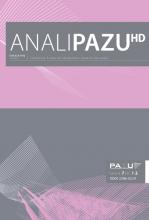CONCEPT OF LIGHT IN SLOVENE, GERMAN AND HUNGARIAN PHRASEMES
Abstract
The conceptualization and understanding of the world that surrounds us are tightly linked to our everyday experiences, especially to our experience with light, since vision is our dominant sense and light represents the foundation of all our visual experience.
The paper discusses Slovene, German and Hungarian phrasemes from the semantic field of LIGHT and analyzes them with the methods of contrastive and conceptual analysis in order to establish how these languages structure the concept of LIGHT. We define phrasemes as conventional expressions that store and transmit various accumulated knowledge about certain phenomena of the world, in this case: light. The results indicate that the concept of LIGHT is very productive in forming conceptual metaphors in all three languages and that it structures target domains that are mainly connected to knowledge, valuation, perception and the concepts od good and bad; the duality of LIGHT and DARK (usually in inferred form) is also used for interpreting the intended meaning. Even thought the majority of metaphors that are connected with the concept of light appear in all three languages, there are also some differences that we try to reveal in the paper.
